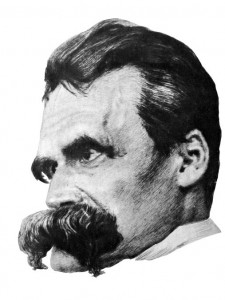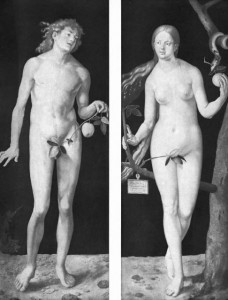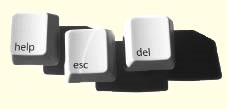Non-fiction
Damned nihilists
30 December 2008 | Extracts, Non-fiction

Much misunderstood: father of the superman, Friedrich Nietzsche.
The term nihilism is often bandied about, but often badly misunderstood. In extracts from his new book, Ei voisi vähempää kiinnostaa. Kirjoituksia nihilismistä (‘Couldn’t care less. Writings on nihilism’, Atena, 2008), the social scientist and philosopher Kalle Haatanen discusses the true legacy of Friedrich Nietzsche, nihilism’s high priest
The word nihilist is derived from the Latin: ‘nihil’ means, simply, ‘nothing’. When someone is labelled as nihilist or seen as representing nihilism, this has always been a curse, a mockery or an accusation, whether in philosophy, politics or everyday conversation. More recently, the word has generally been used to refer to people who do not believe in anything – people whose world-view is without principle, without ideals, barren. More…
Boys Own, Girls Own? –
Gender, sex and identity
30 December 2008 | Essays, Non-fiction

Knowing good and evil: Adam and Eve (Albrecht Dürer, 1507)
In Finnish fiction of the present decade, both in poetry and in prose, there seems to be at least one principle that cuts across all genres: an overt expression of gender, writes the critic Mervi Kantokorpi in her essay
Relationships and family have always been central concerns of literature; questions about gender and individual identity have received a new emphasis in Finnish literature from one season to the next. The gender roles represented in contemporary literature appear to become ever more stereotypical. The question is no longer only of the author consciously setting his or her gender up as the starting point for expression, as has already long been the case with modern literature written by women. More…
Works in progress
Issue 3/2008 | Archives online, Essays, On writing and not writing

Olli Jalonen’s latest novel, 14 solmua Greenwichiin (’14 knots to Greenwich’, 2008), was 19 years in the making. He ponders the joys and tribulations of such a slow maturation
When you spend years or decades writing the same book, what is the drive, passion or compulsion that keeps the cogs turning through the quieter months? Or are the months when you don’t write silent at all? Isn’t it the case that the core of a text or a book is born out of a state of peaceful nothingness?
More often than not, the most important ideas, the strongest details and the sturdiest structures of the art of writing come into being somewhere other than at the computer keyboard. One of the greatest benefits and pleasures of a writer’s work is carrying that work around in mind and body. At these times the writing machinery is whirring, quietly, calmly, freely and unpressured. More…
Blocks and locks
Issue 2/2008 | Archives online, Essays, On writing and not writing

For the writer, not being able to write is just one of the profession’s occupational hazards, says the author Eeva Kilpi. She recalls a particularly debilitating attack of the affliction, and offers suggestions for escaping it
I had no idea I was currently suffering from writer’s block until I was asked to describe the condition.
Now I feel – as I sit at my oId, muscle-powered, Facit typewriter – that a horror of words is the first and normal reaction every time I have to begin a piece (let alone a book). Words dart into hiding like a frightened flock of birds that has barely settled to rest. (And now I hear successful, prolific colleagues rushing to explain how easy it is to use a computer to correct mistakes and move entire paragraphs even from one chapter to another, but I am paralysed by the very thought of a flickering screen, ready and waiting, and of the fateful key by pressing which one may destroy an entire immortal manuscript, as I have heard has happened to some people.) More…
The light itself
Issue 1/2008 | Archives online, Essays, On writing and not writing

What should you do when writer’s block strikes? Lie down and wait for inspiration to return, Petri Tamminen suggests
All autobiographical depictions of writer’s block are fundamentally flawed and false. If you happen to be suffering from writer’s block, these accounts make for painful reading.
The wittier, more carefully crafted and closely observed an account the writer gives of his affliction, the more gut-wrenching it feels. It’s like treading water and preparing to drown and having to listen to someone in dry clothes standing on the deck of a ship recalling a close call he had back in the seventies.
On the other hand, when you’re suffering from writer’s block everything annoys you. Good books seem overwhelmingly good, so much so that you realise you can never achieve that level of greatness. Similarly, bad books seem so overwhelmingly bad that you wonder why anyone bothers reading books and realise that it’s pointless trying to write one. More…
The search goes on
Issue 4/2007 | Archives online, Essays, On writing and not writing

The Finlandia Prize-winning author Kjell Westö recalls his literary adolescence, and the moment – of a dark January night – when he stopped worrying about writer’s block and began to write
When I was in my twenties, my urge to write was very strong. I was driven, almost consumed, by this ever-present zeal, which tore me apart nearly as inexorably and effectively as love did. But I wrote precious little. Now, some twenty years later, I have a general idea about the traps I so unknowingly walked into. More…
Hearth, home – and writing
Issue 4/2007 | Archives online, Extracts, Non-fiction
Extracts from Fredrika Runeberg’s Min pennas saga, (‘The story of my pen’, ca. 1869–1877). Introduction by Merete Mazzarella
The joy and happiness I experience at being able to see into [her husband] Runeberg’s soul, at living with him in his heart and his thoughts, belong far too firmly to the mysteries of my soul that I should wish to attempt to express them in words. But of the life that existed around us I should like to try and give an impression of sorts.
We moved to Borgå in 1837. I was unfamiliar with the town and knew only a little old lady, weak with age, and found myself very lonely indeed, accustomed as I was to living with relatives and a genial circle of friends. I did, however, still have my two eldest sons at home to keep me happy and occupied. More…
Brainstorm
Issue 3/2007 | Archives online, Essays, On writing and not writing

The poet Jouni Inkala finds the words-to-be of his slowly forming poems unbribable
My little fingertip, the size of a crocodile brain, and a turpentine-taste on my palate monitor this moment on the unoxygenated planet of weariness.
One will be baptised – spray paint suddenly swishing its message in my brains – as often in my life, with something darker than water freezing in the font, and I'll recall it's actually a donkey's-years-old message from my own stanzas. More...
Telling the tale
Issue 2/2007 | Archives online, Essays, On writing and not writing

Half of the art of writing lies in not telling the reader everything, writes Kaari Utrio, historian and writer of historical fiction
Fantasy is a curse to science but the lifeblood of literature. The combination of these two opposing factors lies at the core of my work. In the expression, ‘historical novel’, the emphasis is on the word ‘novel’. To me a novel is a story, and I am a storyteller. This is an important basic definition for the genre of literature I write. More…
Subterranean, pre-verbal
Issue 1/2007 | Archives online, Essays, On writing and not writing

Claes Andersson, poet and psychiatrist, ponders the difficulties of writing, and how to get down to it. These are extracts from the collection of articles, Luova mieli. Kirjoittamisen vimma ja vastus (‘The creative mind. The rage and burden of writing’, Kirjapaja, 2002)
Some subjects or ideas need years on the back burner before they submit to being written about. The wise writer learns the basic rule ofthe good midwife: don’t panic, don’t force, wait, and help when the time for birth is at hand, but know also when a Caesarean section is advisable or even necessary. More…
A level gaze
Issue 3/2003 | Archives online, Articles, Non-fiction
The artist Helene Schjerfbeck created her own form of modernism, giving pride of place to emotion, writes Leena Ahtola-Moorhouse. Throughout her solitary life, permanently affiicted by a physical handicap resulting from a childhood accident, Schjerfbeck looked into the mirror for inspiration. In her novel Helene the author Rakel Liehu takes a look at Schjerfbeck’s mirror images and the painter’s long life
Helene Schjerfbeck (1862–1946) was passionately interested in human beings and their inner lives – the riddle of the face.
She was one of the few artists of her generation who both created masterpieces in the naturalistic and impressionistic style of her youth and was also able to shift to an entirely modern, expressionist mode. Intensity and control only increased in the avant-garde paintings of her late period. These bear comparison with the work of Picasso, Modigliani and Rouault. More…


 For an extraordinary period between 1944 and 1956 part of Finland – the Porkkala peninsula, close to Helsinki – was leased to the Soviet Union as a military base. Inspired by the photographs by Jan Kaila, Olli Jalonen explores those silenced and mysterious years, which prompted Finns to ask the question: what if the whole of Finland had succumbed to the same fate?
For an extraordinary period between 1944 and 1956 part of Finland – the Porkkala peninsula, close to Helsinki – was leased to the Soviet Union as a military base. Inspired by the photographs by Jan Kaila, Olli Jalonen explores those silenced and mysterious years, which prompted Finns to ask the question: what if the whole of Finland had succumbed to the same fate?